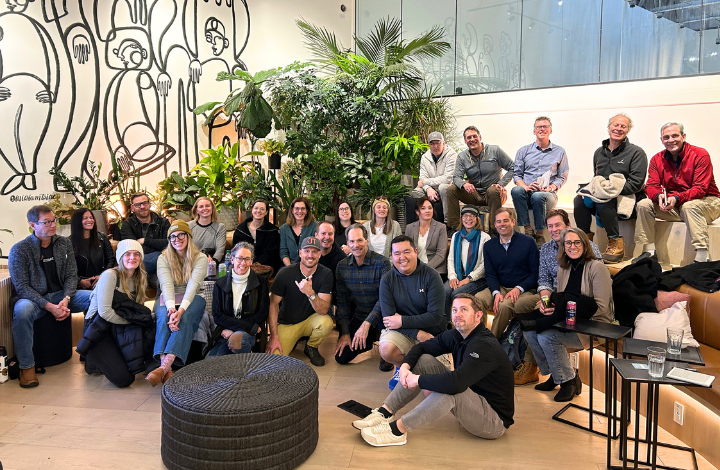Hey community manager—
Did you know when you took the job at your coworking space that you’d also be responsible for the social media, newsletter, website updates, ad copy, partner communications, flyers and blog posts?
Surprise!
Welcome to coworking, where we are connected, supportive and scrappy as hell. Oh yeah, and you’re expected to do all the things gracefully and calmly, handling unanticipated chaos, lovely (and sometimes high maintenance) members, coffee, events, toilet paper, the occasional bird that flies into your space, and lots of writing—lots and lots of writing—with a smile on your face.
Some of us write for fun and for work. That may or may not be you, but you do need to put on your writing cap for all your community management, outreach, networking and space wrangling duties.
No one (hopefully) expects you to turn into a professional writer overnight, but there are some fundamental practices and tricks that will elevate your writing, impress your teammates and engage your members.
Here are 12 of my favorites.
1. Clarity beats clever: Focus on clarity first in your writing. The most important thing is to get your information and ideas in front of your audience. You can add a clever twist now and then, but trying to be too clever in your writing usually ends in unclear copy and confused readers.
2. Consistency is key: The key to becoming a better writer is … writing! I know, it almost sounds rude, but it’s true. Keep at it. Writing something every day is the fast-track to creating more compelling, engaging copy. Create a schedule and stick to it.
3. Don’t ramble: Know what you’re going to say and why. Less is more with copy, so stick to your plan, share the information clearly, then move on.
4. Use templates: There is no reason to start from scratch with every newsletter, social media post, sponsor email or blog post. Create templates that provide the structure, any repeating copy, information, images, attachments or links. You will save so much time and avoid the overwhelm of staring at a blank document.
5. Batch hashtags: Presumably you use the same hashtags over and over on social media, right? I imagine you have tags for your neighborhood, local entrepreneurs, small businesses, aligned organizations, current campaigns, work, wellness, productivity, etc. You may have several different batches, depending on the target audience and context of a post or piece of content. Put these batches of hashtags in one easy to access place.
6. Don’t procrastinate: I know, it’s tempting to wait until the last minute to create that blog post, newsletter, social media post, outreach letter. But don’t do it. Rushed content tends to have typos and unclear copy, it’s rarely as streamlined as it could be, and it reads as rushed rather than intentional. Give yourself time to create something of quality.
7. Proof your work: Related to number six, proofread your writing before hitting send or publish. Where it makes sense, have someone else proofread the finished product if possible. We tend to overlook our own typos and writing mistakes. A second set of eyes is a good thing.
8. Protect your writing time: It’s really hard to write when you’re interrupted every five minutes. As a community manager, being frequently interrupted comes with the job, but not when you’re writing. Your newsletter, social media, web copy and outreach campaigns represent your brand. Create a writing routine and protect your writing time to make sure what you’re putting out into the world shows your space in its best light.
9. Write in short sprints: No one wants to write for hours on end…at least no community managers I know. Write in short sprints to stay fresh and focused. I like working in pomodoros using the Pomofocus tool (I’m using it right now, in fact.). I use pomodoros all the time for a variety of different projects. We also use them for our weekly worksprints in the Lab, our workspace marketing club. It’s amazing what you can accomplish in an uninterrupted 25 minutes.
10. Write for one person: It’s tempting to feel like you’re broadcasting a message to the masses when you’re writing a newsletter or social media post. But you’re not. You’re writing for one person—that one person who opens up your newsletter or looks at your post. In that moment, it is a one-to-one message. Write as though you’re speaking directly to one person—because you are.
11. Keep the focus on the reader: As with all great content (and marketing, in general), your focus should be on the reader. What’s in it for them? Why should they care about what you’re telling them? Your writing is not about you, or your services or how amazing your space is. It’s about how you help them.
12. Be human: The best writing feels human. We resonate with it because the tone is familiar and relatable. Don’t try to sound smart or successful or professional or like a big brand in your writing. The most powerful words are the ones that come directly from you. Proceed accordingly.
Gain community building skills in 5 minutes a week
with weekly letters from Cat





